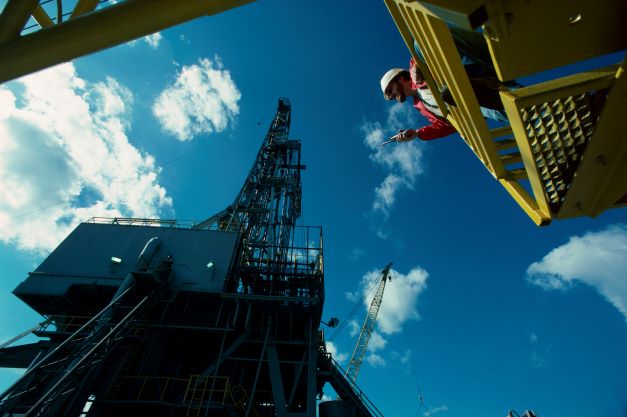Course Details
Home / Public Courses / Course Details
Well Integrity Technologies (PRE17)
22-26 September 2024 5 days Tripoli, LibyaCourse Fee: 3600 EUR
Description
This course covers the main aspects of Well Integrity, starting with the construction of the well. Keeping the well operation within the safety envelope is critical for any oil & gas operator (well integrity technologies).
Well integrity technologies, focusing on monitoring problematic wells, diagnosing the causes of those problems, and implementing techniques to mitigate and/or repair those problems in order to keep the wells operating safely.
Course Level: Foundation
Instructor: Antonio Abreu
Well integrity technologies, focusing on monitoring problematic wells, diagnosing the causes of those problems, and implementing techniques to mitigate and/or repair those problems in order to keep the wells operating safely.
Course Level: Foundation
Instructor: Antonio Abreu

Designed for you, if you are...
- Petroleum engineer
- Production engineer
- Drilling engineer
- Completion engineer
- Oil field technical staff
How we build your confidence
- The course will be presented using properly designed slides, some with animation and several videos on relevant issues.
- Several examples of actual Well Integrity investigation will be presented.
The benefits from attending
By the end of the course you will feel confident in your understanding of:- The fundamentals of well integrity monitoring, and all implications on production efficiency
- How to monitor and identify well integrity problems and technical procedures available for their mitigation
Topics
Day 1: Digital Oilfield- Infrastructure objectives (surface and subsurface equipment)
- Field data capture and data management
- Concepts and strategies of DOF
- Operational safety
- Reservoirs, wells and well heads
- Problems caused by poor cement jobs
- Construction of a well from casings to well head
- Productivity index calculated at well head
- Well head main functions
- Well head classifications
- API specification 6A
- Basic components of a well head
- Well head installation movie
- Casing head / casing head function
- Casing spool / casing spool function
- Casing hangers
- Tubing heads and tubing hangers
- Tubing head adapters
- Typical Xmas tree components
- Fix chokes and adjustable chokes
- Flanges (6B and 6BX types)
- Seals and gaskets
- Unitised well head
- The BOP
Day 2: Xmas Tree Installation
- Well head repairs
- Hydraulic and pneumatic actuators
- Casing hangers and well pressure control
- Common pack offs and secondary seals
- Tubing hangers (cross sections)
- Tests and leak path determination
- Unitised well heads
- Basic rules for pressure testing well heads
- Test schematics of well heads
- Movie: Testing Well Head
- Example of sealing cavity with sealant
- Basic requirements of a well completion
- Casing string types
- Liners, liner hangers and tie back liners
- Effects of pressure in “b” and “c” annulus
Day 3: Well Head Repairs and Casing Repairs
- Surface casing corrosion
- Burst and collapse pressure decline with time
- MAASP calculations for annulus A
- Short introduction to material selection
- Corrosion monitoring tools
- Cathodic protection
- Well Integrity: safety and operational aspects
- Constructing a well with integrity
- Well Integrity issues
- The important of SC-SSSV
- Well head components and well integrity assurance guidelines
- Risk management
- WIMS: Well Integrity Management System
- Industry standards and guidelines
- Well integrity drivers and implementation
- Well integrity envelope
- Well integrity, annular pressures and well head monitoring
- SAP wells
Day 4: Corrosion Monitoring Tools
- Corrosion logs
- Corrosion-tubing leaks
- Consequences of well integrity degradation
- Corrosion mitigation and prevention
- Surface casing repairs
- Temporary well abandonment
- Casing perforation best practices
- Risk assessment
- Downtime and maintenance costs
- Testing seals on wellheads
- Well maintenance and managing risk
- Well integrity in a nutshell
- HAZOP & risk assessment
Day 5: Cement Jobs
- Two stage jobs
- Liner cementing
- Squeeze cementing
- Cement head and wiper plugs
- Pressures during and at end of displacement
- Stab-in shoes and float collars
- Centralisers
- Additives for lost circulation
- Loosing circulation during a cement job
- How a gas kick during cementing can create a critical situation
- LCM Bridging agents
Related Courses
Customer Feedback
"Instructor Team with 3 tutors was really helpful and mutual supplementation." - Drilling Engineer at POSCO"I liked the expert experience sharing." - Production & Well Integrity Engineer at JV Gas
© All rights reserved
HOT Engineering GmbH Tel: +43 3842 43 0 53-0 Fax +43 3842 43 0 53-1 hot@hoteng.com
